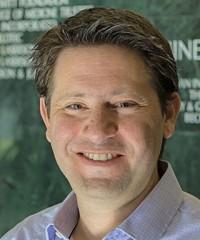Seminar on "Examination of pericellular stiffness in 3D culture"
Events | Mechanical Engineering
Seminar on "Examination of pericellular stiffness in 3D culture"
April 24, 2017 8:30 AM

Speaker
Prof. Elliot Botvinick
Location
ESB 1001
Type
Seminar
While there is some consensus that bulk stromal stiffness regulates cells, correlations with the pericellular mechanical microenvironment are less clear, in large part due to the difficulty of measurement. My group implements Active Microrheology (AMR, an optical tweezers method) to probe extracellular stiffness and map it in the volume surrounding cells cultured in 3D naturally derived extracellular matrix (ECM) hydrogels. AMR applies sinusoidal optical forces onto microbeads embedded within ECMs and our group typically studies ECMs comprising fibrin or type 1 collagen. In our experimental system, AMR reports the complex material response of the ECM, relating bead displacement to applied force, just surrounding each microbead. Because our AMR microscope can probe a multitude of beads surrounding each cell, we can map the pericellular mechanical landscape, allowing us to seek correlations between local stiffness distributions and cell processes such as contractility and differentiation. I will present specific examples for which the distribution of pericellular stiffness correlates with cell phenotypes including: MT1-MMP deficient mesenchymal stem cells, human aortic smooth muscle cells with compromised contractility, and human dermal fibroblasts. Additionally, I will present surprising evidence that a cell’s ability to stiffen its local ECM (by as much as several orders of magnitude) depends on its ability to enzymatically degrade that ECM. In fact, inhibition of either ECM degradation or cytoskeletal force generation reduces the pericellular stiffness to values typical of a cell-free gel, suggesting that both processes are required for creating a normal pericellular mechanical topography.
Dr. Botvinick is Associate Professor of Biomedical Engineering and Surgery at the University of California Irvine. His research program has two areas of focus, one in mechanobiology and the other in medical device development. These two efforts occur in his laboratories located within the Edwards Lifesciences Center for Advanced Cardiovascular Technology and the Beckman Laser Institute and Medical Clinic. In general, both the mechanobiology and medical device efforts utilize photonics tools such as nonlinear microscopy, optical tweezers, luminescent reporters, and laser induced cavitation. The laboratory also develops state-of-the-art instrumentation and devices for quantitative biophysical measurements towards the study of mechanobiology. These tools are applied to test mechanical hypotheses in the areas of cancer biology, microvascular morphogenesis, tissue engineering, and stem cell biology. Dr. Botvinick co-founded Metronom Health, Inc, which manufactures a fiber-type transcutaneous continuous glucose monitor. The Botvinick laboratory is currently funded by the Juvenile Diabetes Research Foundation to: (1) develop a novel device for the transplantation of pancreatic or stem cells for the treatment of type 1 diabetes, (2) develop additional signals for the artificial pancreas, including a continuous insulin monitor, (3) develop and test a new material to extend the lifetime of insulin infusion sets, and (4) conduct a clinical study of the foreign body response to alginate microbeads.